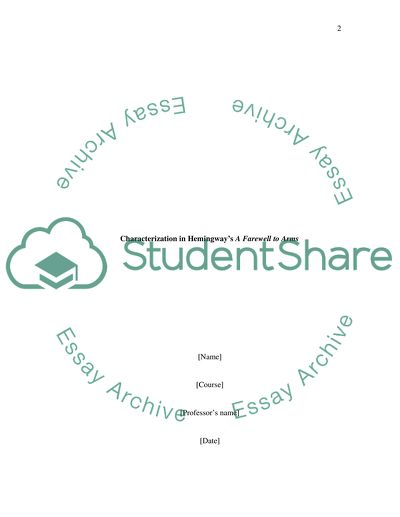Cite this document
(“Characterization in A Farewell to Arms Research Paper - 1”, n.d.)
Retrieved from https://studentshare.org/literature/1421082-characterization-in-a-farewell-to-arms
Retrieved from https://studentshare.org/literature/1421082-characterization-in-a-farewell-to-arms
(Characterization in A Farewell to Arms Research Paper - 1)
https://studentshare.org/literature/1421082-characterization-in-a-farewell-to-arms.
https://studentshare.org/literature/1421082-characterization-in-a-farewell-to-arms.
“Characterization in A Farewell to Arms Research Paper - 1”, n.d. https://studentshare.org/literature/1421082-characterization-in-a-farewell-to-arms.


